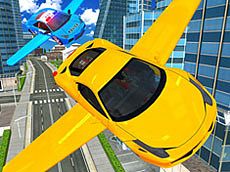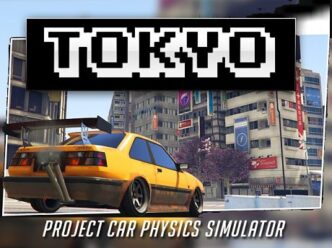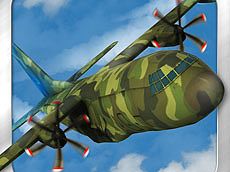How “Epic” Was GTA 3 Planned to Be?
When discussing the grand history of the Grand Theft Auto series, one title consistently stands out as a revolutionary moment in the gaming industry: GTA 3. This seminal game, released in 2001, not only defined the future of open-world games but also introduced an era where immersive environments, gripping narratives, and innovative gameplay were expected standards. However, as uncovered in recent leaks, GTA 3 had much grander plans than what ultimately came to fruition. The game’s early design documents reveal a vision of unprecedented scale and ambition, a vision that would have set new benchmarks in the gaming world.

Unveiling the Leaked Plans: A Glimpse Into a Larger Vision
The early concept documents for GTA 3, which have surfaced over the years, provide insight into a game that was poised to be far more than the iconic title it eventually became. These documents, dating back to 2001, highlight features and mechanics that were originally intended to be part of the game, many of which were cut during development due to technical constraints, time limitations, and evolving priorities.
These early plans painted a picture of a GTA 3 that was to be not just a revolutionary game but an entire ecosystem with numerous interconnected systems. The ambition behind the game was immense, with Rockstar aiming to create a fully-fledged virtual city where every building, street, and character had a deeper level of interaction. From complex faction systems to innovative gameplay mechanics, the original vision was as bold as it was extraordinary.
Faction Systems: A Living, Breathing World
One of the most intriguing aspects of the original GTA 3 design was the introduction of complex faction systems. The game was set to feature numerous factions, each with its own unique goals, personalities, and behaviors. These factions were to play an integral role in shaping the game’s narrative and missions, creating a world where the player’s choices could dramatically influence the course of events.
In these early plans, the faction dynamics were to extend far beyond what we ultimately saw in the final release. Players would have had to navigate a delicate balance, making alliances and enemies with various groups. This system would have allowed for an even deeper level of strategic planning, as players would need to consider the long-term consequences of their actions within the game’s world.
A Skill-Based Progression System: Customizing the Protagonist
Another exciting concept from the leaked documents was the idea of a skill-based progression system. In contrast to the relatively straightforward progression that was implemented in the final game, the early GTA 3 plans featured a system where players could level up specific skills, making their protagonist more proficient in certain areas such as combat, driving, or even negotiation.
This feature would have added another layer of depth, enabling players to tailor their character’s abilities to fit their preferred playstyle. Whether focusing on becoming an expert driver, a master of firearms, or an unbeatable negotiator, this skill-based progression system would have provided a far more personalized experience.
Property Ownership and Management: Owning the City
Perhaps one of the most ambitious features that was originally planned for GTA 3 was the concept of property ownership. According to the design documents, players would have been able to purchase, upgrade, and manage various properties scattered throughout the game’s vast urban environment. These properties could have included businesses, safehouses, and even entire city blocks.
This element would have allowed players to feel more deeply embedded in the game world, providing a sense of permanence and investment. Owning property would not just be a status symbol but would have allowed players to generate passive income, fund their operations, and unlock additional gameplay opportunities.
Online Integration: A Vision for GTA 3 Online
While the concept of online multiplayer games was still in its infancy in the early 2000s, the leaked documents suggest that Rockstar had plans for an online component for GTA 3. The idea was to create a multiplayer environment where players could interact in a shared version of the game’s open world, competing for dominance or forming alliances.
This feature would have likely changed the landscape of multiplayer gaming, introducing the chaotic, immersive nature of GTA into the online space. Although the technology of the time was not quite ready for such an ambitious project, the idea of GTA 3 Online offers a fascinating glimpse into what could have been.

A City of Endless Possibilities: The Design of Liberty City
The concept for Liberty City was equally ambitious. Rockstar envisioned a world where every building, alleyway, and street corner offered opportunities for interaction and exploration. In the early drafts, Liberty City was meant to be a living, breathing metropolis, with diverse districts and dynamic events happening in real-time.
This vision of a city far more interactive and detailed than what was eventually realized would have given players an unparalleled level of freedom. Not only could they navigate the city and engage in missions, but they would also be able to influence the environment itself, leaving a lasting impact on the city and its inhabitants.
Technological Limitations: Why the Vision Was Never Fully Realized
Despite the bold plans, many of these ambitious features were ultimately scaled back or cut entirely. The limitations of the hardware at the time, particularly the PlayStation 2, meant that Rockstar had to prioritize certain elements of the game over others. The skill-based progression system, faction dynamics, and property ownership all had to be pared down to fit within the technological constraints.
Moreover, the decision to focus on delivering a high-quality, functional open-world experience meant that many of the more experimental features were left on the cutting room floor. While these cut features may have limited the final product, GTA 3 still managed to become one of the most influential games of all time.
The Legacy of GTA 3 and Its Impact on the Gaming Industry
Although the original plans for GTA 3 were scaled back, the game that was eventually released set new standards for open-world games. The level of freedom, the complexity of the world, and the depth of the narrative were all groundbreaking for their time. GTA 3 not only redefined what a video game could be but also paved the way for future Rockstar titles, including GTA: San Andreas, Red Dead Redemption, and GTA 5.
The early design documents and ambitious plans for GTA 3 offer a fascinating look at the potential that was harnessed during its development. They remind us of the limitless possibilities of game design and the boundless creativity of the developers at Rockstar Games. Even though GTA 3 did not fully realize its original vision, the impact it had on the gaming industry is undeniable. It changed the way we think about open-world games and set the stage for the future of the Grand Theft Auto series and the entire gaming industry as a whole.
Conclusion: The “Epic” Vision of GTA 3
The story of GTA 3 is one of ambitious dreams, innovation, and evolution. The early plans for the game reveal a world far grander and more intricate than what we ultimately experienced, but that doesn’t diminish the game’s cultural and industry-shaping legacy. GTA 3 forever changed the gaming landscape, proving that even scaled-back ambitions can lead to groundbreaking achievements. The lessons learned from these early designs continue to influence game development to this day, ensuring that GTA 3 remains one of the most epic games ever created.





















